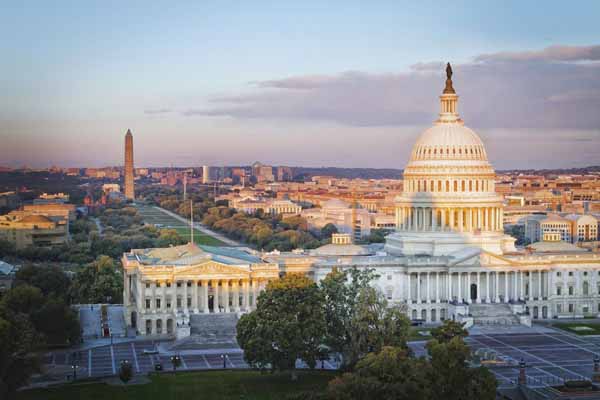
This is a top story of 2025.
In its annual sweeping regulation on Medicare physician payment, the Centers for Medicaid & Medicare Services (CMS) proposes notable changes in what the agency itself calls a “major proposed rule” resulting in a modest pay bump in 2026 – but still leaving unanswered questions about long-term sustainability for participating physician practices.
A temporary, one-year 2.5% payment update across the board reflects requirements Congress approved in early July in its final budget under the One Big Beautiful Bill Act (OBBBA). CMS' nearly 1,000-page proposed rule also reflects additional requirements in the final budget reconciliation legislation, both of which the Texas Medical Association continues to analyze as it prepares to submit comments on the 2026 Medicare physician fee schedule by the Sept. 12 deadline.
TMA President Jayesh “Jay” Shah, MD, welcomed the raise but emphasized it does little to close the chasm caused by decades of Medicare underpayments – including five years of successive cuts – that have led to practice closures and patient access concerns.
“Physicians have been dealing with the faulty formula Medicare uses to pay physicians for too long. What we really need is a permanent and sustainable solution that ensures practice viability and patient access for generations to come,” he said.
In line with recommendations from the nonpartisan congressional advisory group MedPAC, and with the 2025 Medicare Trustees report, TMA, the American Medical Association, and others in organized medicine continue to advocate for permanent Medicare physician payment updates, among other reforms, that accurately reflect physician practice costs as measured by the Medicare Economic Index – costs the AMA estimates will go up 2.7%.
Following its stated goal to transition all patients to value-based models by 2030, CMS' proposal does include, for the first time, two separate conversion factors with slight, albeit permanent, updates to calculate Medicare physician payments, depending on whether physicians participate in alternative payment models (APMs). CMS proposes a similar split for the anesthesia conversion factors.
Based on a statutory update required by the Medicare Access and CHIP Reauthorization Act (MACRA), CMS proposes a larger 0.75% update for physicians who are "qualifying participants” (QPs) in advanced APMs, and a lower 0.25% update for non-QP physicians.
Taken together with a positive 0.55% budget neutrality adjustment and the across-the-board 2.5% raise, physicians in a qualifying APM would see a Medicare pay increase of 3.8% in 2026; those not in a qualifying APM would see a 3.3% boost.
TMA also will be evaluating the impact of a newly introduced "efficiency adjustment" in addition to other proposed methodology shifts meant to account for "a steady decline in the number of physicians working in private practice, with a corresponding rise in physician employment by hospitals and health systems," CMS wrote in a fact sheet.
Quality Payment Program updates
In a sliver of relief for Merit-Based Incentive Payment System (MIPS) participants, CMS proposes to maintain the 75-point threshold to avoid a payment penalty of up to 9% through the 2028 performance/2030 payment years. According to AMA, 29% of small practices, 49% of solo practitioners, and 18% of rural practices are receiving a MIPS penalty.
As CMS pushes toward eliminating traditional MIPS, however, and transitioning physicians into newer MIPS Value Pathways, the agency offers six new specialty tracks, bringing the total to 27:
- Diagnostic radiology
- Interventional radiology
- Neuropsychology
- Pathology
- Podiatry
- Vascular surgery
A new mandatory ambulatory specialty model, meanwhile, would hold specialists who treat people with traditional Medicare financially accountable for upstream management of chronic conditions. The five-year model, which would start Jan. 1, 2027, focuses on low back pain and congestive heart failure. The model would follow the MIPS incentive/penalty payment structure of up to 9%.
TMA, AMA and others have long advocated that CMS fix long-term problems within traditional MIPS before proceeding with newer models.
Following up on new Advanced Primary Care Management codes rolled out in 2025, another key proposal includes creating optional add-on codes for those services that would facilitate providing complementary behavioral health integration or psychiatric Collaborative Care Model services.
In a mixed bag for telehealth, CMS proposes to remove the frequency limitations for subsequent inpatient visits, subsequent nursing facility visits, and critical care consultations. Permanently adopting a Medicare waiver, with few exceptions, telehealth visits also could be performed under the direct supervision of a physician through real-time audio and visual interactive telecommunications (not audio only), although the proposal would not apply to teaching physicians.
In announcing the 2026 fee schedule proposal, CMS Administrator Mehmet Oz, MD, said, "We are taking meaningful steps to modernize Medicare, cut waste, and improve patient care. We’re making it easier for seniors to access preventive services, incentivizing health care providers to deliver real results, and cracking down on abuse that drives up costs. This is how we protect Medicare for the next generation while helping Americans live longer, healthier lives."
In the coming weeks, TMA staff and leadership will pore over the regulatory proposal's impact for physicians to prepare more detailed comments and analysis. If you have specific feedback for TMA to consider, please email Shannon Vogel by Aug. 15.
CMS is expected to post the final rule around Nov. 1, and changes take effect Jan. 1, 2026.
Find the additional resources on the following CMS webpages: